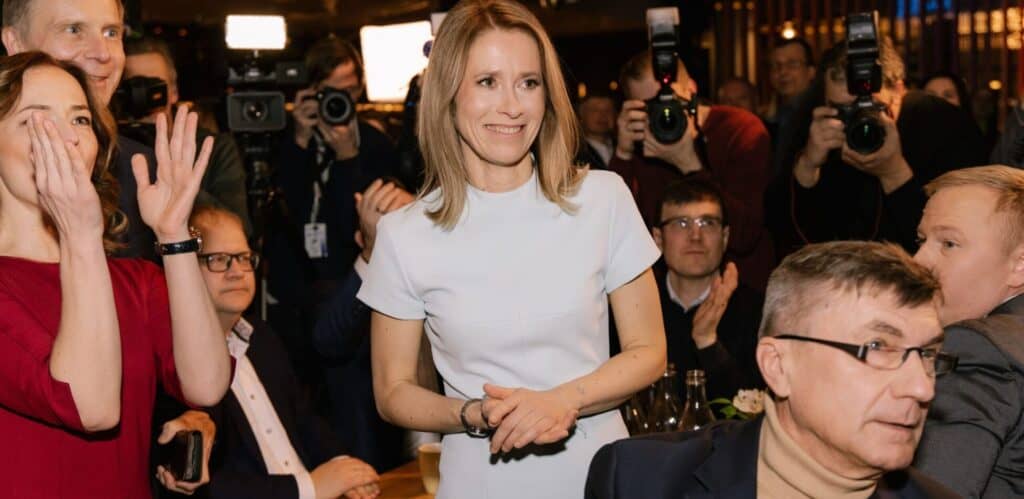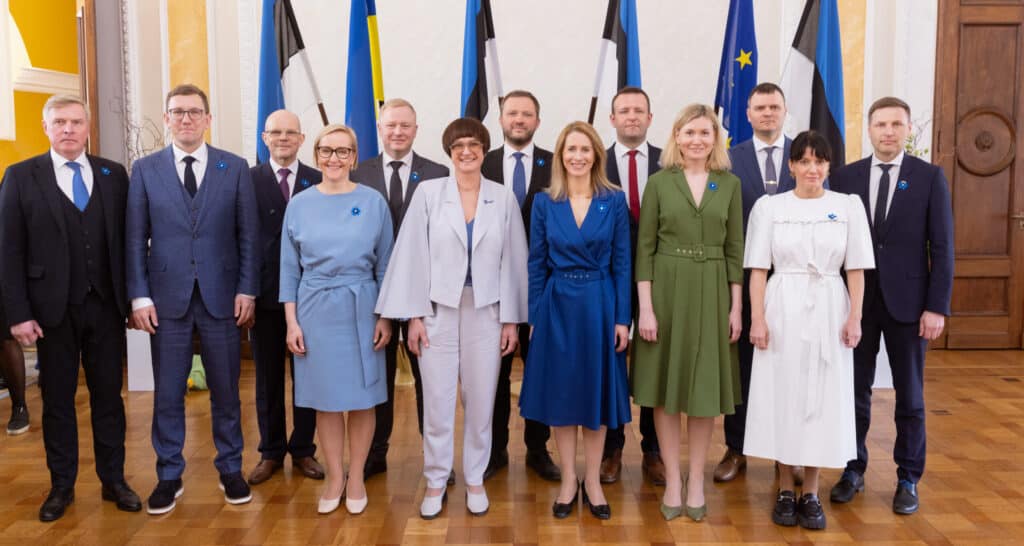Eesti Reformierakond asutati 13. novembril 1994. aastal.

Ajalugu
2023
2023
2023 on aasta, mida jääb meenutama Reformierakonna otsustav ja enneolematu võit riigikogu valimistel, kui saavutasime riigikogus erakordsed 37 mandaati. Oli selge, et Eesti inimesed langetasid 5. märtsil valiku vaba ja avatud ühiskonna ning endasse sulgunud ja üksioleva tigeda pisikese riigi vahel. Teisisõnu selle üle, kas valitsuse moodustab Reformierakond või EKRE. Valimistulemus kinnitas üheselt, et Eesti inimesed soovisid näha riiki juhtimas just Reformierakonda. 
Saime neil valimistel kokku 190 640 häält. See on 31,2% kõigist antud häältest, mis tagas meile Riigikogus 37 mandaati. Kõik kolm numbrit on Eesti ajaloos rekordid erakondade lõikes. Eesti ajaloo parima tulemuse tegi ka erakonna juht Kaja Kallas, kes sai enneolematud 31 816 häält.
Mõned näited meie saavutustest:
- Kasvatasime oma häälte arvu kõigis Eesti 12 valimisringkonnas. Harjumaal saime 2019. aastaga võrreldes pea 8000 häält rohkem, kogudes kokkuvõttes 42 000 häält.
- Hea tulemuse tegid ka kõik meie esinumbrid – üle Eesti saadi 9 isikumandaati ja 7 neist olid reformierakondlased – Kristen Michal, Urmas Paet, Urmas Klaas, Siim Kallas, Hanno Pevkur, Jürgen Ligi – ja Kaja Kallas.
- Reformierakonna fraktsiooni osutus valituks 13 naist. Kokku pääses Riigikogusse 30 naist, mis on kõigi aegade parim tulemus – ja pea pooled neist on Reformierakonnast.
Suur võit oli aga algus olulistele algatustele, mida oleme peale 5. märtsi Eesti elu edendamiseks julgete otsustega teinud.
Koalitsioonikõnelusi alustasime SDE ja E200 erakonnaga, kel oli meile kõige sarnasem nägemus Eesti tulevikust. Läbirääkimisi pidasime suure põhjalikkusega, sest soov oli panna kokku sisukas ja tulevikku vaatav koalitsioonilepe, millega juhtida riiki järgnevad neli aastat.
8. aprillil kinnitasime erakonna volikogul osaluse loodavas valitsusliidus ning 17. aprillil astus ametisse Kaja Kallase kolmas valitsus.
 Reformierakonna uus valitsusdelegatsioon oli järgnev:
Reformierakonna uus valitsusdelegatsioon oli järgnev:
peaminister Kaja Kallas
rahandusminister Mart Võrklaev
kaitseminister Hanno Pevkur
sotsiaalkaitseminister Signe Riisalo
kliima- ja elukeskkonnaminister Kristen Michal
justiitsminister Kalle Laanet
kultuuriminister Heidy Purga
Meie juhitav valitsus pani kokku ambitsioonika koalitsioonilepingu, millest päris olulised osad on juba ellu viidud või ellu viimisel. Koalitsiooni suurim ühisosa on Eesti iseseisvus, korras riigi rahandus, meie majanduslik edukus ja väärtusküsimused.
Valitsuskoalitsioon viis 2023. aastal ellu mitmeid Eesti jaoks vajalikke otsuseid, nende seas:
- Tõstsime Eesti riigikaitse kulud üle 3% SKP-st. Eesti kaitse-eelarve ületab 2024. aastal nende otsuste mõjul esimest korda kolme protsendi piiri, jõudes 3,2 protsendini SKPst. Sellega panustab riik riigikaitsesse üle 1,3 miljardi euro.
- Kaotasime maksuküüru. Meie üks olulisemaid valimislubadusi saab viimaks teoks – alates 2025. aastast muutub maksusüsteem taas lihtsaks ja õiglaseks, kuna kaob keskklassi karistav maksuküür ning tulumaksuvaba miinimum tõuseb 700 euroni kuus kõigile. Selle tulemusena jääb inimestel aastas kuni 1280€ rohkem raha kätte, et otsustada ise, kus seda kõige enam vaja läheb.
- Alustasime riigirahanduse korrastamist. Reformierakonna juhitud valitsuse üks olulisi eesmärke on aidata riik välja võlaspiraalist, sest riigi rahakott on maksumaksjate ehk Eesti inimeste ja Eesti ettevõtete oma. Ilma nende otsusteta peaks Eesti riik prognoosi kohaselt 2027. aastal ainuüksi laenuintressi maksma 480 miljonit eurot aastas. See on raha, mis ei läheks mitte millegi muu jaoks kui pankadele – seda ei saa kasutada Eesti hariduse, majanduse ega inimeste hüvanguks.
 2023. aasta sügisel valis Reformierakond omale ka uue juhatuse. Ametisse sai uus ja tegutsemisindu täis juhatus, kelle sekka kuuluvad:
2023. aasta sügisel valis Reformierakond omale ka uue juhatuse. Ametisse sai uus ja tegutsemisindu täis juhatus, kelle sekka kuuluvad:
erakonna juht Kaja Kallas
erakonna aseesimehed Maris Lauri, Jürgen Ligi, Hanno Pevkur
juhatuse liikmed Aivar Sõerd, Andres Sutt, Erkki Keldo, Irina Talviste, Kalle Laanet, Kristen Michal, Maarja Metstak, Madis Timpson, Marko Mihkelson, Signe Riisalo, Urmas Klaas, Urmas Kruuse, Urmas Paet.
Erakond sai Endla tänaval uue kodu. Alates 2023. aastast ei asu enam erakonna peakontor Tõnismäe 9 aadressil. Meid pikalt teeninud kontor jääb vahvaks mäletuseks, sest juba 2023. oktoobrist seadsime end sisse uues kontoris aadressil Endla 16.
Toeta
Liitu püsiannetajatega
Liitu Reformierakonna püsiannetajate kogukonnaga, et saaksime liberaalse maailmavaate veelgi enamate inimesteni viia. Anna oma pikaajaline panus, et Eesti jätkaks paremal kursil!
Liitu uudiskirjaga
Ole kursis meie kõige uuemate tegemiste ja seisukohtadega. Kuigi kirja sisu on alati huvitav, saad selle tellimusest iga kell loobuda.








